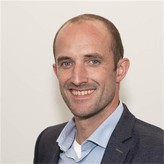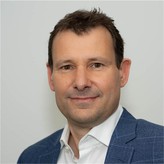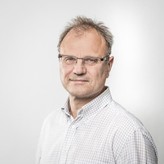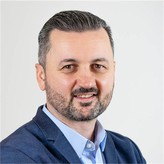Energy management concepts
Energy management concepts typically show a number of viable ways of meeting the energy needs of a building or an entire development site. Working together with our clients, we define criteria of evaluation and alternative plans. The individual plans are quantified and compared to one another. This enables us to specify and recommend the plan that offers the greatest long-term utility. The support we provide in the context of helping you develop an effective energy management concept includes the following services:
- Identification of your present energy needs (temperature levels, output and energy supply volumes) and your future energy needs (e.g. on the basis of possible development scenarios)
- Definition of viable means of energy supply and distribution
- Quantification of the alternative plans with reference to final energy consumption and operating costs (energy, operation and maintenance costs, as well as CO2 emission fees, etc.)
- Comparison of annual costs, space requirements and other factors
- Alternative plan evaluation and final recommendation
It is only by working together with the client and keeping abreast of the latest technological developments that we are able to arrive at an optimal energy management concept. Innovation almost always pays in this regard.
General planning
We draft innovative overall solutions that meet the needs of our clients. The technical designs are worked out in consultation with clients, architects, construction engineers, operators and users. Our aim is to secure efficient operation, low maintenance costs and a high degree of flexibility when it comes to the ultimate use of the buildings and systems in question. Moreover, we always take account of the entire life cycle of the properties we evaluate, from the initial strategic concept to daily operation and future conversion.
Spatial coordination
Spatial coordination is crucial whenever building construction is involved. We have a wealth of experience in this area and can guarantee that the dialogue between architecture, structural engineering and process and building systems engineering is maintained throughout the entire design process and that the resulting technical systems match the building at every stage of the construction.
Technical coordination
The construction of a technically complex building is becoming an ever greater challenge. The client’s contact persons are not only the architects but also the planners of the various construction phases related to building services.
In addition to spatial coordination, it is also important to ensure technical coordination, as well as adjustments to the depth and complexity of a building. Appropriate interfaces during all project phases must be identified, assigned and documented. The technical coordinator manages these interfaces and is the link between all project participants.
Services within the scope of the SIA phases
The technical coordinator ideally joins the project at the start of SIA Phase 3 and provides support with the following services:
- Monitoring and enforcement of QM measures
- Management of contracts, budget management and supplementary work (construction costs)
- Ensuring that the requirements of the specifications are met in planning and execution (e.g. MINERGIE, customer guidelines, etc.)
- High-level monitoring, testing, coordination and documentation of the preparations and clarifications given by the planning specialists for applications, approvals and acceptance from the authorities
- Ensuring that the technical solutions of all phases and systems are compatible with each other
Phase 3
Interface papers must be drawn up for all building services and the cost structure (outline, accuracy, sub-projects, etc.) must be agreed with the client. The technical coordinator also monitors and coordinates the implementation of a plant identification system and ensures that an integrated measurement and energy concept is in place.
The technical coordinator ensures proper communication of the boundary values for the building physics, acoustics and statics of the building services systems and ensures these are taken into account in the project accordingly.
Phase 4
- Determination of the submission boundary values (uniform prefix)
- Management of the submission procedure (publication/submissions/procurement applications)
Phase 5
- Preparation of the commissioning concept
- Expertly coordinated organisation, implementation and management of the higher-level integrated tests, consolidation of the results in an overall documentation file
- Management and guidance of technical and official acceptance
- Supervision and coordination of the training courses for users and operators
- Definition of the structure and contents of the building file
With their broad specialist knowledge, the technical coordinator ensures that the optimum solutions of the individual phases merge into the best possible overall solution. This leads to the optimisation of the technically integral development and to an overall result that is as sustainable and economical as possible.








